Category: Archives
Essential Art
Louise Marburg at The Hudson Review:
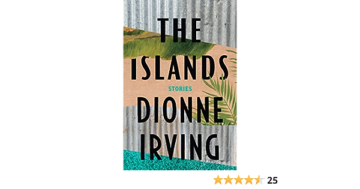 I mean it as a compliment when I say many of the stories in The Islands are disturbing. Shame and alienation are the baggage Irving’s characters carry. Some are entitled, living the American dream, while others scrape by or are haunted by loss. “All-Inclusive” is a gorgeously dark story. In an ironic switch, Anaya, a Los Angeles model-slash-waitress and the daughter of Jamaican immigrants, meets a white man known as The Poet who is from Jamaica. Anaya becomes The Poet’s mistress, and they travel the world together. He is rich, she is poor; he is married, she is not. She revels in being able to “demand drinks, not deliver them,” and “To call for a bed to be turned down.” Anaya hasn’t visited Jamaica since she was a child, and her memories of the place are unpleasant. When she and The Poet take a trip to an all-inclusive resort on the island, Anaya wonders, had she been born and raised in Jamaica, if she would be doing the bidding of thoughtless white tourists, turning down their beds at night. She is ashamed and humbled by being waited on by people like herself and her family, many of whom still live on the island; that she is being willingly used by a white man who disgusts her is a truth she can’t admit to herself until he flat-out tells her. There are no happy endings in The Islands, and redemption is just out of reach. Its characters walk a tightrope between past and present realities.
I mean it as a compliment when I say many of the stories in The Islands are disturbing. Shame and alienation are the baggage Irving’s characters carry. Some are entitled, living the American dream, while others scrape by or are haunted by loss. “All-Inclusive” is a gorgeously dark story. In an ironic switch, Anaya, a Los Angeles model-slash-waitress and the daughter of Jamaican immigrants, meets a white man known as The Poet who is from Jamaica. Anaya becomes The Poet’s mistress, and they travel the world together. He is rich, she is poor; he is married, she is not. She revels in being able to “demand drinks, not deliver them,” and “To call for a bed to be turned down.” Anaya hasn’t visited Jamaica since she was a child, and her memories of the place are unpleasant. When she and The Poet take a trip to an all-inclusive resort on the island, Anaya wonders, had she been born and raised in Jamaica, if she would be doing the bidding of thoughtless white tourists, turning down their beds at night. She is ashamed and humbled by being waited on by people like herself and her family, many of whom still live on the island; that she is being willingly used by a white man who disgusts her is a truth she can’t admit to herself until he flat-out tells her. There are no happy endings in The Islands, and redemption is just out of reach. Its characters walk a tightrope between past and present realities.
more here.
Friday Poem
The Tao Begot One
The Tao begot one.
One begot two.
Two begot three.
And three begot the Ten Thousand Things.
The ten thousand things carry yin and embrace yang.
They achieve harmony by embracing these forces.
Men hate to be “orphaned,” widowed,” “worthless,”
But this is how kings and lords describe themselves.
For one gains by losing
And loses by gaining.
What others teach, I also teach; that is:
“A violent man will die a violent death!”
This will be the essence of my teaching.
Lao Tzu
from the Tao Te Ching
translation: Gia-Fu Feng and Jane English
Vintage Books, 1972
Art and Science as Parallel and Divergent Ways of Knowing
Lawrence Weschler at Wondercabinet:
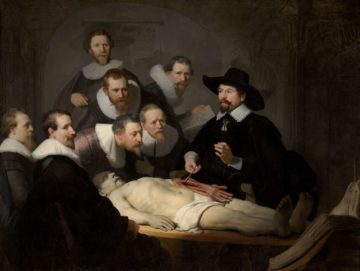 Perhaps, to begin with, a remark by Nabokov—always a good place to start—who at the time was laying out the requisites for being a good novelist, though, for our purposes we might think of these as the requirements for being fully alive. But listen to him closely, because it’s the opposite of how we usually think of these things: “The true master,” he says, “requires, the precision of a poet and the imagination of a scientist.” The precision of a poet—and the imagination of a scientist.
Perhaps, to begin with, a remark by Nabokov—always a good place to start—who at the time was laying out the requisites for being a good novelist, though, for our purposes we might think of these as the requirements for being fully alive. But listen to him closely, because it’s the opposite of how we usually think of these things: “The true master,” he says, “requires, the precision of a poet and the imagination of a scientist.” The precision of a poet—and the imagination of a scientist.
Keep in mind, of course, that in some precincts, Nabokov was every bit as famous a scientist as he was a writer. A lepidopterist, to be exact, who once surprised his Italian publisher Roberto Calasso by telling him that he’d never been to Venice. “Good Lord,” asked Calasso. “Why ever not?” To which Nabokov answered, self-evidently, “No butterflies.”
more here.
The Fate of the Animals
J.C. Scharl at Fare Forward:
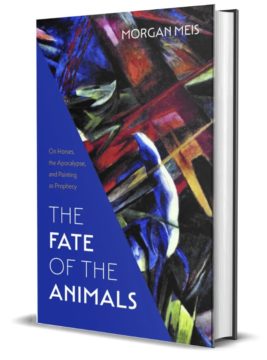 It’s hard to know how to review a Morgan Meis book, and the more books he writes, the harder it gets. That is, I think, precisely the point. Meis’s last book, The Drunken Silenus (part one of the Three Paintings trilogy, published by Slant Books), tackles the question “What is the best thing for man?”, knocks it flat, and gives it a concussion. Part two of the trilogy, The Fate of the Animals, is the tale of a painting whose artist thought it was almost unseeable, is enamored of the unsayable—yet by the final page, Meis has come terrifying close to saying just that.
It’s hard to know how to review a Morgan Meis book, and the more books he writes, the harder it gets. That is, I think, precisely the point. Meis’s last book, The Drunken Silenus (part one of the Three Paintings trilogy, published by Slant Books), tackles the question “What is the best thing for man?”, knocks it flat, and gives it a concussion. Part two of the trilogy, The Fate of the Animals, is the tale of a painting whose artist thought it was almost unseeable, is enamored of the unsayable—yet by the final page, Meis has come terrifying close to saying just that.
Morgan Meis is not everyone’s cup of tea, and The Fate of the Animals is the most Morgan Meis book yet. Take that as you will. For my part, I found the book shatteringly beautiful.
More here.
Allow patents on AI-generated inventions — for the good of science
Ryan Abbott in Nature:
 AI’s contributions to research and development might help to solve some of humanity’s oldest challenges, including by finding new treatments for diseases. The patent system must be overhauled.
AI’s contributions to research and development might help to solve some of humanity’s oldest challenges, including by finding new treatments for diseases. The patent system must be overhauled.
An AI system is not a legal person, so it cannot (and should not) own property. Our cases have nothing to do with ‘AI rights’ — they are about what rules will maximize the social benefits of AI and minimize its risks.
The main purposes of the patent system are to encourage innovation, the disclosure of inventions that would otherwise be kept as trade secrets and the commercialization of new products. These outcomes could be achieved by allowing patent protection for AI-generated inventions, which would be owned by the AI’s owner, just as the owner of a 3D printer would also own what comes out of it.
More here.
Best Stephen Fry Moments on the Graham Norton Show
Why So Many Elites Feel Like Losers
Freddie deBoer in Persuasion:
 The concept of “elite overproduction” has attracted a lot of attention in the past several years, and it’s not hard to see why. Most associated with Peter Turchin, a researcher who has attempted to develop models that describe and predict the flow of history, elite overproduction refers to periods during which societies generate more members of elite classes than the society can grant elite privileges. Turchin argues that these periods often produce social unrest, as the resentful elites jostle for the advantages to which they believe they’re entitled.
The concept of “elite overproduction” has attracted a lot of attention in the past several years, and it’s not hard to see why. Most associated with Peter Turchin, a researcher who has attempted to develop models that describe and predict the flow of history, elite overproduction refers to periods during which societies generate more members of elite classes than the society can grant elite privileges. Turchin argues that these periods often produce social unrest, as the resentful elites jostle for the advantages to which they believe they’re entitled.
Consider societies in which aristocrats enjoy feudal privileges over land and are afforded influence in government. These sorts of dynastic privileges have been common in world history. Now imagine that over time, the number of people in this class has grown; more and more children of aristocrats means there are more and more people who hold aristocratic status. This creates a math problem: there’s only so much land to divide up and only so many people that can meaningfully guide government.
More here.
Thursday, August 24, 2023
Four Ways of Thinking – safety in numbers?
Steven Poole in The Guardian:
 Depending on which source of pop-rationality you consult, there are three, five, six or more ways of thinking that need to be mastered before the psychology-entertainment complex will consider you “smart”. So is there a good argument for four? And is making good arguments one of them?
Depending on which source of pop-rationality you consult, there are three, five, six or more ways of thinking that need to be mastered before the psychology-entertainment complex will consider you “smart”. So is there a good argument for four? And is making good arguments one of them?
Well, here one will not learn about syllogisms or the perils of affirming the consequent. The author, a professor of applied mathematics, has instead adapted a classification of natural systems once proposed by the whiz-kid Stephen Wolfram to describe in turn four ways of understanding the world: statistical, interactive, chaotic and complex. Statistics can help uncover broad truths across populations, such as, for example, the basic truths of healthy eating, but headline-grabbing claims can be statistically underpowered and so unreliable, as Sumpter lucidly demonstrates with claims such as that psychological “grit” is a hugely important factor in success. (“Although grit explains around 4% of the variation between individuals,” he notes mildly, “this leaves a further 96% unexplained.”)
More here.
A poetic, panoramic memoir of insomnia
Samantha Harvey in The Guardian:
 All our body wants is to sleep, it wants to leave us, head back to the stable, a worn-out horse,” writes Marie Darrieussecq, at which I, a worn-out human, think yes. In a recent interview, Darrieussecq reflected on how much of her work is concerned with inhabiting. Who has a right to inhabit this planet, she asks, and who doesn’t? Though she was talking about her novel Crossed Lines, in which a Parisian woman finds her life becoming bound up with that of a young Nigerian refugee, she could just as well be referring to Sleepless (Pas Dormir in the original French), a book that is – what? A memoir/interrogation/painting/song of insomnia, her own and that of others. It’s a book about where, why, how we sleep and don’t sleep; about how to find a place in the world where sleep can happen, a stable for the worn-out horse.
All our body wants is to sleep, it wants to leave us, head back to the stable, a worn-out horse,” writes Marie Darrieussecq, at which I, a worn-out human, think yes. In a recent interview, Darrieussecq reflected on how much of her work is concerned with inhabiting. Who has a right to inhabit this planet, she asks, and who doesn’t? Though she was talking about her novel Crossed Lines, in which a Parisian woman finds her life becoming bound up with that of a young Nigerian refugee, she could just as well be referring to Sleepless (Pas Dormir in the original French), a book that is – what? A memoir/interrogation/painting/song of insomnia, her own and that of others. It’s a book about where, why, how we sleep and don’t sleep; about how to find a place in the world where sleep can happen, a stable for the worn-out horse.
Sleepless isn’t a book that’s straightforward to convey, at least not briefly.
More here.
Andreas Wagner Pursues the Secrets to Evolutionary Success
Veronique Underwood in Quanta Magazine:
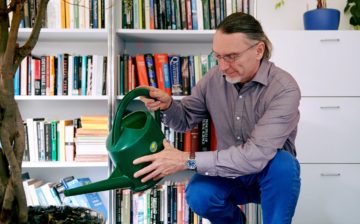 Every organism responds to the world with an intricate cascade of biochemistry. There’s a source of heat here, a faint scent of food there, or the crack of a twig as something moves nearby. Each stimulus can trigger the rise of one set of molecules in an animal’s body and perhaps the fall of others. The effect ramifies, tripping feedback loops and flipping switches, until a bird leaps into the air or a bee alights on a flower. It’s a vision of biology that entranced Andreas Wagner, an evolutionary biologist at the University of Zurich, when he was still a young student.
Every organism responds to the world with an intricate cascade of biochemistry. There’s a source of heat here, a faint scent of food there, or the crack of a twig as something moves nearby. Each stimulus can trigger the rise of one set of molecules in an animal’s body and perhaps the fall of others. The effect ramifies, tripping feedback loops and flipping switches, until a bird leaps into the air or a bee alights on a flower. It’s a vision of biology that entranced Andreas Wagner, an evolutionary biologist at the University of Zurich, when he was still a young student.
“I thought that was much more fascinating than this idea that biology is about counting the number of things that are out there,” he said. “I realized biology could be about fundamental principles of organization in living systems.”
His career, which has included stints at the Santa Fe Institute and the Institute for Advanced Study in Berlin, has taken him from modeling the regulation of gene transcription in an embryo, where precision timing makes the difference between life and death, to asking how an organism can manage to evolve when any change in its genes could spell disaster. He has used theoretical models to probe difficult questions about what drives evolution, and he has wondered about evolutionary innovations that seem to lead nowhere — until they suddenly become the next big thing. His most recent book, Sleeping Beauties: The Mystery of Dormant Innovations in Nature and Culture (Oneworld Publications, 2023), is an exploration of this phenomenon.
More here.
As the hottest summer on record draws to a close, how do we make sense of the images of a climate in crisis?
Alexis Pauline Gumbs in Harper’s Bazaar:
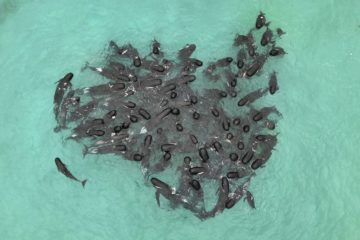 I wanted to write a poem about how the extreme heat of the ocean is breaking my heart, but the whales beat me to it. In late July, almost 100 long-finned pilot whales left the deep, usually cold waters where they live—so deep, so cold that scientists have barely been able to study them. Together they came to the coast of western Australia and huddled into a massive heart shape (if your heart were shaped like 100 black whales, like mine is). Then, collectively, they stranded themselves on the shore. As soon as they lost the support of the water, their chest walls crushed their internal organs. They literally broke their hearts. Choreographed under helicopter cameras.
I wanted to write a poem about how the extreme heat of the ocean is breaking my heart, but the whales beat me to it. In late July, almost 100 long-finned pilot whales left the deep, usually cold waters where they live—so deep, so cold that scientists have barely been able to study them. Together they came to the coast of western Australia and huddled into a massive heart shape (if your heart were shaped like 100 black whales, like mine is). Then, collectively, they stranded themselves on the shore. As soon as they lost the support of the water, their chest walls crushed their internal organs. They literally broke their hearts. Choreographed under helicopter cameras.
I want to write a poem about how capitalism is a sinking ship and how the extreme wealth-hoarding and extractive polluting systems that benefit a few billionaires are destroying our planet and killing us all. But the orcas beat me to it. Off the Iberian coast of Europe, the orcas collaborated and taught each other how to sink the yachts of the superrich. They literally sank the boats. While Twitter cheered.
More here.
The original “Turing Test” paper is unbelievably visionary
Imagining Other Worlds at the India-Pakistan Border
Rashmi Sadana in Sapiens:
 There are two main ways to experience the border between India and Pakistan at Wagah: You can cross it through the trade route if you’re a trucker delivering goods or you’ve managed to secure a visa to enter—a difficult if not impossible task for most Indians or Pakistanis. [1] Or, you can attend the daily border ceremony, where soldiers on either side meet to lower their countries’ flags in an elaborate display of military pageantry.
There are two main ways to experience the border between India and Pakistan at Wagah: You can cross it through the trade route if you’re a trucker delivering goods or you’ve managed to secure a visa to enter—a difficult if not impossible task for most Indians or Pakistanis. [1] Or, you can attend the daily border ceremony, where soldiers on either side meet to lower their countries’ flags in an elaborate display of military pageantry.
From the India side, I head to the border ceremony, arriving first at a multilevel concrete parking structure. The anticipation builds as I get out of a taxi and join the droves walking from the parking lot to a football-like stadium.
It’s July 2022, and in a few weeks, both countries will celebrate their 75th anniversaries of independence from British colonial rule.
More here.
Arthur Schopenhauer’s Philosophy
What Would A Truthful Kashmir Novel Look Like?
Feroz Rather at Public Books:
 What would a successful war novel look like? This question, asked of a teacher years ago, concealed a deeper question I had: What would a truthful Kashmir novel look like? I have grappled for years with such questions, since I grew up amid the violent rebellion that Kashmiri Muslims waged against the Indian state in 1988. At first, I wondered whether the job of the novelist was to replicate the traumatic event that one had intimately witnessed.
What would a successful war novel look like? This question, asked of a teacher years ago, concealed a deeper question I had: What would a truthful Kashmir novel look like? I have grappled for years with such questions, since I grew up amid the violent rebellion that Kashmiri Muslims waged against the Indian state in 1988. At first, I wondered whether the job of the novelist was to replicate the traumatic event that one had intimately witnessed.
But ultimately, I found that the work of a novelist demands something more. Thanks to reading my teacher Robert Olen Butler’s book From Where You Dream, I understood that novelists need to transmute history, metabolizing it into the human details that constitute the selfhood of the character. My first book, The Night of Broken Glass, features multiple fictional narrators who contemplate the killings and custodial torture and myriad massacres that happened in the recent history of Kashmir. In the process of writing these interweaving short stories, I realized it was only possible because I’d witnessed the events of excessive military violence as they were inflicted on my people.
more here.
Simone Weil’s Thoughts On The Unmaking Of The Self
Robert Zaretsky at The American Scholar:
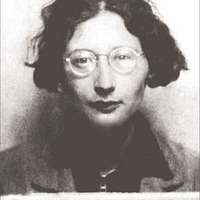 Though Weil coined the term decreation, she never treated it at length in a single text. Instead, she seeds passages on the subject through her later notebooks, not living long enough to give them shape. (Depending on your perspective, Thibon helpfully or misleadingly grouped several of these passages under the rubric of “Décréation” in Gravity and Grace.) But honestly, how much more she could have said about this claim? There are only so many ways to express the thought that I should unmake the being who is expressing that same thought. I have read and written a good deal on Weil’s work and life, but the passages on decreation still shock me. They are steeped in Christian imagery and ideals, and I sometimes wonder if my reaction to them has to do with the fact that I am neither a Christian nor religious. (Besides, I know Christians who, like me, are just as stunned by these fragments.) And my shock is not, I believe, because I do not accept a transcendental reality. Instead, I am shocked because her notion of decreation questions not just how I have lived my life but why I should have ever bothered to live in the first place—other than, that is, to surrender my life as quickly and gladly as possible. “Our existence,” she observes matter-of-factly, “is made up only of his waiting for our acceptance of not being.”
Though Weil coined the term decreation, she never treated it at length in a single text. Instead, she seeds passages on the subject through her later notebooks, not living long enough to give them shape. (Depending on your perspective, Thibon helpfully or misleadingly grouped several of these passages under the rubric of “Décréation” in Gravity and Grace.) But honestly, how much more she could have said about this claim? There are only so many ways to express the thought that I should unmake the being who is expressing that same thought. I have read and written a good deal on Weil’s work and life, but the passages on decreation still shock me. They are steeped in Christian imagery and ideals, and I sometimes wonder if my reaction to them has to do with the fact that I am neither a Christian nor religious. (Besides, I know Christians who, like me, are just as stunned by these fragments.) And my shock is not, I believe, because I do not accept a transcendental reality. Instead, I am shocked because her notion of decreation questions not just how I have lived my life but why I should have ever bothered to live in the first place—other than, that is, to surrender my life as quickly and gladly as possible. “Our existence,” she observes matter-of-factly, “is made up only of his waiting for our acceptance of not being.”
more here.
Thursday Poem
Coffee With Milk
It is very deep to have a cup of tea
Also coffee in a white cup
with milk
a hand to go around the cup
and a mouth to open and take it in
It is very deep and very good to have a heart
Do not take the heart for granted
it fills with blood and lets blood out
Good to have a chair to sit in
with these feet on the floor
while I drink this coffee
in a white cup
To have the air around us to be in
To fill our lungs and empty them like weeping
This roof to house us
the sky to house the roof in endless blue
To be in the midwest
with the Atlantic over there
and the Pacific on our other side
It is good this cup of coffee
the milk in it
the cows who gave us this milk
this
simple as a long piece of grass
by Natalie Goldberg
from The top of My Lungs
The Overlook Press, 2002
Wednesday, August 23, 2023
Was Tolstoy An Enemy of Love?
Ron Rosenbaum at Literary Hub:
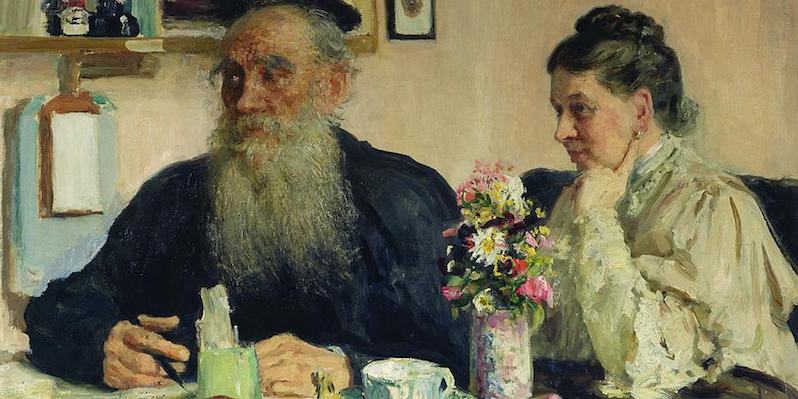 Deep in a Russian forest, in a well-concealed hermit’s cave, the lone occupant, who hadn’t spoken to another human being for seven years, a hermit named Sergius who had renounced the world, is forced to resist the wiles of a worldly woman who has come to seduce him and almost succeeds had he not, Tolstoy tells us, forfended her intentions by taking an axe and chopping off one of his fingers “below the second joint.”
Deep in a Russian forest, in a well-concealed hermit’s cave, the lone occupant, who hadn’t spoken to another human being for seven years, a hermit named Sergius who had renounced the world, is forced to resist the wiles of a worldly woman who has come to seduce him and almost succeeds had he not, Tolstoy tells us, forfended her intentions by taking an axe and chopping off one of his fingers “below the second joint.”
While, in a contemporaneous Tolstoy novella, a wealthy rural landowner, Evgeny, alone in his study, tries to contain his obsession with the vision of a serving girl with “dark eyes,” and, failing to do so, takes out his pistol and contemplates a choice: whether to murder the serving girl whose laughing eyes have him transfixed, or to put a bullet through his brain to preserve his “honor.” And elsewhere, in a third novella, out on the frozen steppes, the passengers in the crowded compartment of a long-distance train find themselves at the mercy of Pozdnyshev, a confessed wife-murderer, who, Tolstoy tells us, has only just been released on grounds of insanity but insists on taking up the long rail journey by offering his extremely long-winded “explanation” for slashing his wife to death with his saber.
What do these three scenes have in common? Each is the dark center of one of Lev Tolstoy’s trilogy of late novellas whose venomous animus against love, sex, and human reproduction leads to what is his most shocking argument of all: that all of mankind would be better off if it were to die out, exterminate itself by ceasing “swinish” sexual reproduction and abandoning the love that all too often led to it. Exterminate itself. Seriously.
More here.
Which jobs will survive the AI revolution?
David Runciman in The Guardian:
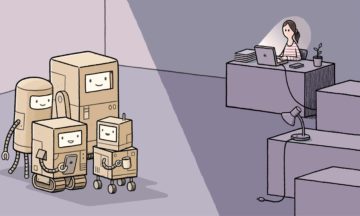 At the 2021 Australian and US Open tennis championships, all the line judges were replaced by machines. This was, in many ways, inevitable. Not only are these machines far more accurate than any human at calling balls in or out, but they can also be programmed to make their calls in a human-like voice, so as not to disorient the players. It is a little eerie, the disembodied shriek of “Out!” coming from nowhere on the court (at the Australian Open the machines are programmed to speak with an Australian accent). But it is far less irritating than the delays required by challenging incorrect calls, and far more reliable. It takes very little getting used to.
At the 2021 Australian and US Open tennis championships, all the line judges were replaced by machines. This was, in many ways, inevitable. Not only are these machines far more accurate than any human at calling balls in or out, but they can also be programmed to make their calls in a human-like voice, so as not to disorient the players. It is a little eerie, the disembodied shriek of “Out!” coming from nowhere on the court (at the Australian Open the machines are programmed to speak with an Australian accent). But it is far less irritating than the delays required by challenging incorrect calls, and far more reliable. It takes very little getting used to.
In the slew of reports published in the 2010s looking to identify which jobs were most at risk of being automated out of existence, sports officials usually ranked very high up the list (the best known of these studies, by Carl Benedikt Frey and Michael Osborne in 2017, put a 98% probability on sports officiating being phased out by computers within 20 years). Here, after all, is a human enterprise where the single most important qualification is an ability to get the answer right. In or out? Ball or strike? Fair or foul? These are decisions that need to be underpinned by accurate intelligence. The technology does not even have to be state-of-the-art to produce far better answers than humans can. Hawk-Eye systems have been outperforming human eyesight for nearly 20 years. They were first officially adopted for tennis line calls in 2006, to check cricket umpire decisions in 2009 and, more recently, to rule on football offsides.
More here.
